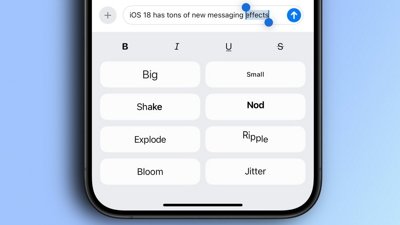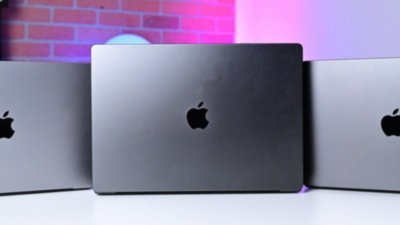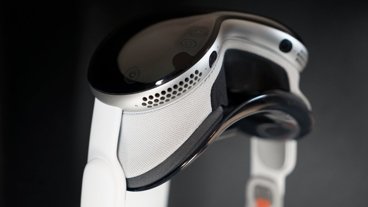Apple's long-awaited mixed-reality headset launch on Monday will be a "risky endeavor" for the company, a leaker claims, but "design quirks" will be worked through in future revisions as the offering is refined over the coming years.
After years of development and speculation, there is a general consensus among rumor-watchers that Apple will finally show off its AR and VR-capable headset during the WWDC keynote on Monday.
In Sunday's "Power On" newsletter for Bloomberg discussing WWDC itself, Mark Gurman writes about how the headset could "usher in a new era" for Apple, shifting how people interact with devices. Gurman also warns it is "also a risky endeavor that could backfire for Apple," due to headsets still being a "nascent field."
As part of the Apple VR headset offering, Gurman indicates the headset will have some "design quirks" that Apple will have to overcome for it to become a success, such as the rumored external battery pack and $3,000 price tag. The lack of a "killer app" is also a potential issue for the headset.
However, Gurman is bullish in saying "the headset could be the future of the computer and that the company needs to start somewhere." Expecting the first model will be a flop in unit sales compared to other Apple product lines, Apple may still become the top company in the market "within a matter of quarters."
Apple is also expected to fix problems from the first model in subsequent releases. These include potential nausea complaints, performance issues, a lack of cellular connectivity, and the pricing issue.
Gurman concludes that, though it could take three or five years for the headset to actually become a hit, it would be unwise to bet against a marketing and engineering juggernaut like Apple. "If anyone can make this product category a success, it's Apple," he writes.
For the event itself, Gurman says Apple will have two demonstration areas, with the Steve Jobs Theater used to promote new Mac models. A second, a temporary structure on the Apple Park soccer field, is expected to house the headset for the launch.
 Malcolm Owen
Malcolm Owen

-m.jpg)







 Oliver Haslam
Oliver Haslam
 Amber Neely
Amber Neely
 Marko Zivkovic and Mike Wuerthele
Marko Zivkovic and Mike Wuerthele

 Andrew Orr
Andrew Orr

-m.jpg)









15 Comments
Personally, I see no issues with these so-called quirks if the end product does what it aims to do.
No SIM is perfectly fine if the device is focused on consumer home use. Yes, IMO, that would restrict it's scope a lot in terms of general XR use but if that is the focus, I can't see any problem.
Likewise a tethered battery is definitely a non-issue if the alternative is adding more weight (and therefore less comfort) to wearing the device. If use time is extended as a result, then better still. There are solutions to that particular problem that are 'ready' but just haven't come to market yet. Like ceiling mounted, laser charging (which has the advantage of charging multiple devices at the same time. Of course, that would add to cost so traditional charging (hopefully ultra fast for once) would be fine.
There will be some people, like those who claim Apple only releases products when they are fully baked, who might feel a bit conflicted by a product that possibly isn't mature enough to hit the ground and all its goals at the outset but there is no better way to improve a product than by using it in the real world. And actual production plus sales help to bring prices down as the future generations improve.
Until we see the checkboxes of what they aim to do, it's impossible to know how many didn't get checked, got partially checked or are checked completely.
Regarding nausea -
I was in a room with a bunch of "higher ups" watching a demo of someone wearing an AR headset with what he was seeing on projector screens. Up to about a minute in, everyone was enthusiastic about what the tech was doing: installing parts. Then, I started looking at them... one by one they started looking away, until all of them were intentionally shadowing their faces from the screen. One or two left the room and din't come back in until they were made aware that the projector was now showing a PowerPoint.
I asked about that, and everyone was getting nauseous, mainly because the micro-movements of our heads are well accounted for by our brains and the AR headset, but to those watching, it looked like he was on the water, but they were on land, so the movement didn't match what they were seeing.
They technician had no issues, nor did most of the people when they tried the headset on.
There is a phenomenon where the users do get seasick, claustrophobic, or have other issues when wearing AR/VR headsets, and one thing I believe can help solve this is not having cameras display on the screen, but have clear screens that project the images needed, and let the user see reality with no delay.
I do fly FPV drones, and it's a lot of fun to do that, and every 8-9 minutes I have to take the goggles off and maybe that's the eye-rest I need.
Dear God it’s a headset, not a cure for cancer, or Alzheimer’s cure. FFS, what does this thing do for humanity except represent another money pit for Apple. Having first world worries about something that really benefits no one must be nice.